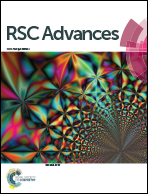Effect of temperature and moisture contents on dielectric properties at 2.45 GHz of fruit and vegetable processing by-products
Abstract
Microwave heating is a part of several food processing unit-operations, while also emerging as a processing technology for by-products. Process efficiency depends on dielectric properties; however, data of these by-products are scarce in literature. The present study is focused on the effect of temperature and moisture content (M) on the dielectric constant (ε′) and loss (ε′′) of carrot waste, apple pomace, pineapple peel and spent coffee grounds at 2.45 GHz. Results on ε′ showed moisture-dependent temperature effect with an inflection point at M = 50.3%. The ε′′ increased with increasing M up to 60% and decreased at higher moisture levels. Results at different temperatures were significantly affected by the composition of the studied materials and thus the calculated power penetration depth. Although fresh food dielectric properties are available in literature, the data is not always suitable to estimate food waste properties as processing may cause compositional changes. The obtained results support microwave process optimization in the field of food-waste valorization.



 Please wait while we load your content...
Please wait while we load your content...